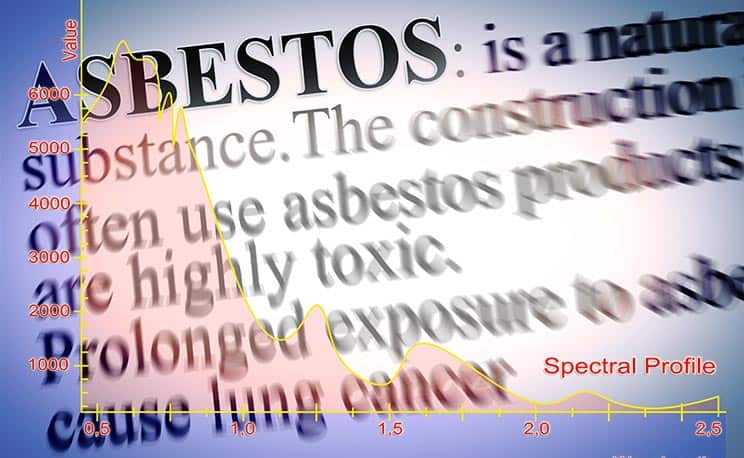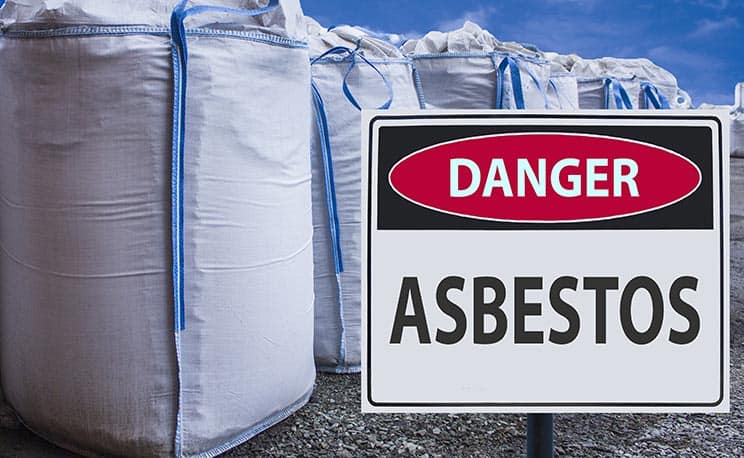When inhaled, asbestos minerals can wreak havoc on the body, most commonly on the respiratory system. Diseases caused by asbestos exposure result in the death of thousands of people annually. Asbestos is the focus of extensive scientific and medical research, which has confirmed its status as a well-known toxin and human carcinogen.
Although asbestos use and mining has declined drastically in the United States, asbestos can surprisingly still be found as an active ingredient in manufactured products, including ones used in construction, transportation and insulation. In fact, the United States is one of the only industrialized countries that has not completed banned asbestos.
What is Asbestos?
Asbestos is a toxic substance which generally refers to six naturally occurring silicate minerals with fibrous, crystalline structures. These minerals include:
- Actinolite
- Anthophyllite
- Amosite
- Chrysotile
- Crocidolite
- Tremolite

Chrysotile, or “white asbestos” is the most commonly used asbestos mineral throughout the United States and is considered to constitute over 90% of all asbestos found in the country. Together, all six minerals are noteworthy for their ability to produce thermal insulation and provide chemical or electrical resistance. For this reason, asbestos use has a historical significance in manufacturing, and the harmful material is surprisingly still used to this day.
Where is Asbestos Found?
The asbestos minerals are key ingredients in manufactured goods used in construction, insulation and packaging. Some examples of products where asbestos is commonly found include:
- Roofing materials
- Tiles
- Papers
- Fabrics
- Cement
- Plaster
- Caulk
- Electrical wiring
- Vehicle components, like brake and transmission systems
Even though its use has declined significantly over time due to its adverse medical hazards, there is a high probability that asbestos can still be found in residential or commercial buildings and cars, especially those that were built and manufactured before and throughout the 1970s.
What Does Asbestos Look Like?
Asbestos is characterized by soft and flexible fibers, which are traditionally identified to have a grey or silver color. When these fibers are handled or disturbed, they can be released into the air and inhaled or ingested. Because they are microscopic, asbestos particles are not easily detected by the naked eye. With time, manufacturer warnings on tags or labels of asbestos products can be eroded, decayed or missing altogether. This increases the dangers to anyone that comes into close contact with the products containing the material.

Does Asbestos Still Exist?
Over the years, laws and regulations have drastically reduced the manufacturing and use of asbestos. However, asbestos products are still utilized and can be found in a wide variety of settings. Disregarding the clear health risks from exposure and ingestion, asbestos use continues to be seen in manufactured products and exported in many countries.
When Was Asbestos Banned?
One of the first documented deaths related to exposure occurred as early as 1906 but the dangerous consequences of asbestos exposure were not recognized and identified until the 1960s and made especially clear in the 1970s with advances in detection devices, such as X-ray machines and CT scans. Although asbestos is not totally banned under United States law, its use in manufacturing has been limited and regulated at the national level by the United States Environmental Protection Agency (EPA) in 1988. Since then, asbestos has been included in categories of hazardous materials by other agencies and its improper or undisclosed use can trigger litigation and even criminal prosecution.
Current United States Asbestos Laws and Regulations
The United States EPA has implemented laws and regulations to protect citizens from improper asbestos exposure. These legislative articles outline specific and strict measures to protect buildings from asbestos use, ensure proper disclosure of asbestos ingredients in manufacturing, and increase transparency regarding the presence of asbestos in specific products. The regulations also address the importation of asbestos products from abroad and promote safety measures regarding construction, renovation and demolition on sites that are thought to contain asbestos.
Some examples of laws and regulations enacted in the United States to protect against asbestos exposure are the following:
- The Federal Hazardous Substances Act of 1960: As one of the first laws concerning consumer protection, this law formally identifies asbestos as a hazardous substance and bans its use and manufacture in any fireplace or flame heating systems or in any clothing.
- The Toxic Substances Control Act of 1976: This establishes the Environmental Protection Agency as the acting authority in the United States regarding reporting, testing and issuing restrictions related to toxic chemicals and substances, including asbestos.
- The Asbestos Information Act of 1988: This asbestos law focuses on information and transparency regarding the use of asbestos minerals in any consumer or commercial products. Most importantly, this act issued mandatory disclosure requirements on labels and ticketing, outlining a classification system for types of asbestos and establishing penalties and retribution for those that disregard its provisions.
- The Asbestos Hazard Emergency Response Act of 1986: This asbestos law was ratified to require the obedience of all regulations concerning the inspection, sampling, removal and repair of asbestos materials in public educational facilities. It also establishes protocol and response plans for addressing asbestos removal, outlining ideal criteria for state accreditation.
- The Asbestos Ban and Phase-Out Rule of 1989: This asbestos law by the EPA intended to completely prohibit any and all asbestos manufacturing and use in the United States. Unfortunately, this ban only lasted about two years and was overturned in 1991.
Products that Still Contain Asbestos
Despite years of research focused on the potential health hazards and the corresponding attempts to regulate asbestos use at a national level, a formal ban has yet to take effect in the United States. Asbestos containing products remain prevalent in a wide variety of commercially manufactured or imported products in sectors such as automotive, construction and utilities. Along with the low costs of asbestos minerals, its durability, fire resistance, absorption and nonconductive properties make it ideal for use in manufacturing and building materials.

Asbestos in Car Parts
Given its ability to provide insulation from excessive heat and fire, asbestos has been used in various car parts, which are subject to high friction in motor vehicles. Asbestos can still be found in the following automotive parts:
- Brake blocks
- Disc brake pads
- Gaskets
- Drum brake linings
- Transmission plates
- Clutch facings
- Fume hoods
Asbestos in Construction Materials
Asbestos fibers were one of the most commonly used materials in construction and renovation and can still be found in products today. Under federal law, manufacturers can still use asbestos in a variety of construction products, as long as they meet certain standards and regulations. Some asbestos containing materials currently used for construction include:
- Insulation blankets
- Industrial protective cloth coverings
- Sealants, caulks, and thermal tapes
- Fireproof texture plasters, paints and coatings
- Gaskets and high temperature enclosures
- Friction materials in rail, automotive and airline parts
- Industrial tiles, siding and protection casings
Asbestos in Boilers
Similar to the automotive and construction sectors, asbestos was used in the installation and insulation of gas, fuel, electrical or oil pipelines and heating systems. Asbestos is useful in materials utilized in boilers due to its non-flammable fibers that can reduce energy costs and eliminate fire hazards. Even though its use is controlled and highly regulated, there are still some boilers or heating systems that include asbestos in the manufacture of parts or components. Asbestos fibers can still be found in the following boiler parts:
- Insulating foams and wraps
- Loose-fill insulation
- Textile linings for access points or boiler doors
- Paneling for boiler enclosures
Asbestos Exposure Diseases
Since asbestos fibers are strong and flexible, when agitated, they are released into the air as microscopic particles. When inhaled, it can cause serious contamination to the lungs and eventually lead to lung cancer, mesothelioma, asbestosis, or other asbestos related diseases including:
- Pleural Plaques
- Pleural Thickening
- Pleural Effusion
- Stomach Cancer
- Rectal Cancer
- Laryngeal Cancer
- Pharyngeal Cancer
- Oropharyngeal Cancer
- Ovarian Cancer
While the dangers of asbestos exposure are clear, the onset of symptoms of corresponding diseases could take decades to detect, diagnose and treat. The more frequent and prolonged exposure to asbestos, the worse its consequences can become.

Asbestos Exposure Legal Help
Patients diagnosed with mesothelioma or other asbestos-related diseases may be entitled to financial resources and compensation. Hiring an asbestos attorney to assist and represent a victim of asbestos exposure is integral to receiving compensation to relieve the heavy financial burden asbestos diseases often cause people. Attorneys that represent victims of asbestos-related diseases and illnesses are specialized practitioners that have significant experience representing clients in asbestos lawsuits.
Victims who suffer from asbestos-related diseases and illnesses have the right to identify their contract employers as subjects of claims and lawsuits. Under United States law, employers have an obligation to protect their employees and take measures to ensure their safety. Exposure to asbestos is a known health risk that can cause damage decades after the exposure. Filing an asbestos lawsuit under the direction of a premier asbestos attorney can secure certain criteria are met that directly affect the ability to obtain a settlement. For example, personal injury or wrongful death attorneys can help determine and prove the following:
- Unlawful exposure to asbestos-laden material was a direct result of dangerous or hazardous working conditions
- The contract employer endangered the victim through negligence
- The diagnosis of an asbestos-related disease was a direct, long-term result of asbestos exposure incurred during the contractual employment
- The value of the claim or the amount sought in the lawsuit is accurate and fully covers any costs or damages as a result of the asbestos exposure including testing, diagnosis and treatment of the asbestos disease.
Environment Litigation Group
The Law Center partner, the Environment Litigation Group (ELG) is a distinguished firm dedicated to helping victims that have been exposed to asbestos and other toxins. Since 1990, they have processed over 200,000 asbestos claims, recovering over $1.4 billion in settlements for asbestos victims and their families. The professional, compassionate and skilled attorneys at ELG are ready to take on your asbestos claim, protect your rights, and fight to obtain the maximum compensation on your behalf.
The Law Center
The Law Center’s nationwide network of leading attorneys have substantial experience in representing victims of negligence, accompanying them every step of the way toward justice. Contact The Law Center today by calling 833-716-0087 or fill out the form below to be connected with a premier asbestos legal team and get started on your path toward financial relief and personal recovery.
Sources
- https://www.atsdr.cdc.gov/substances/toxsubstance.asp?toxid=4
- https://www.cdc.gov/niosh/topics/asbestos
- https://www.atsdr.cdc.gov/csem/csem.asp?csem=29&po=5
- https://chemcare.co.nz/articles/what-asbestos-looks-like
- https://www.law.cornell.edu/uscode/text/15/2607
- https://www.epa.gov/asbestos/asbestos-laws-and-regulations
- https://www.hse.gov.uk/gas/landlords/070612-gas-asbestos-materials.pdf